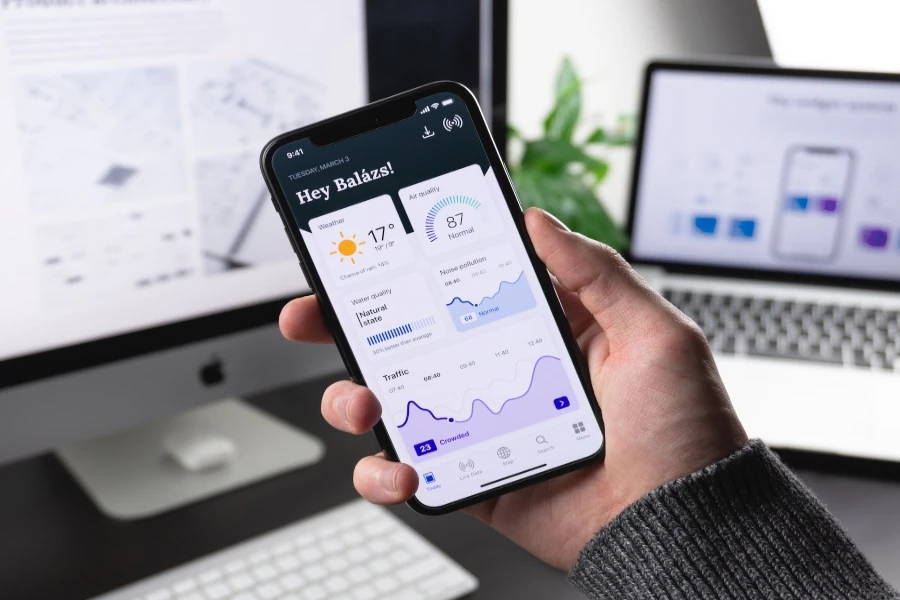In a world full of centralized power, the desire to build a DApp grows stronger every day. Decentralized applications, or DApps, challenge traditional systems by promoting autonomy and removing the need for central authorities. Intrigued? Hold on tight as we embark on a journey of discovery to learn how to create a decentralized app!
Before we dive in, we recommend visiting this comprehensive guide on how to make a decentralized app. It will help lay a strong foundation for our upcoming adventure. Now, without further ado, let’s get started!
A Bit Of The History Of Decentralized Applications
A DApp, or decentralized application, is a software application that runs on a decentralized computing network. The concept of DApps is relatively new, and it emerged in the context of blockchain technology.
The first blockchain-based DApp was Bitcoin, which was created in 2009. Bitcoin was designed to serve as a decentralized digital currency that could be used for peer-to-peer transactions without the need for intermediaries like banks. The success of Bitcoin inspired other developers to create decentralized applications that could run on top of blockchain technology.
In 2013, a developer named Vitalik Buterin proposed the idea of Ethereum, a blockchain platform that would allow developers to create and run DApps. Ethereum launched in 2015, and it quickly became the most popular platform for DApp development. Since then, thousands of DApps have been created on the Ethereum network, including decentralized exchanges, gaming platforms, social networks, and more.
Today, DApps are an exciting and rapidly growing area of innovation in the technology industry. They offer a range of benefits over traditional centralized applications, including increased security, transparency, and user control. With the continued growth and development of blockchain technology, it is likely that DApps will continue to play an increasingly important role in the digital economy in the years to come.
Decrypting The DApp-Making Process
Well, like anything on the planet, a good step-by-step process can really turn dreams into reality.
Step 1: Ideation – the genesis of a DApp
You can’t create decentralized application without a groundbreaking idea. So, let the creative juices flow and brainstorm unique concepts that address real-world problems. Focus on innovative solutions that empower users and align with the principles of decentralization.
Step 2: Choosing the right blockchain platform
Once you have a solid idea, it’s time to select the appropriate blockchain platform. Consider factors such as programming languages supported, scalability, and consensus mechanisms. Some popular platforms for building DApps include Ethereum, EOS, and Binance Smart Chain. Remember, the platform you choose will significantly impact your DApp’s performance and user experience.
Step 3: The Art of Smart Contracts
A DApp’s foundation is built on smart contracts, which are self-executing agreements with specific terms directly written into code. To create a successful DApp, you’ll need to master the art of writing and deploying smart contracts. Each platform has its preferred programming language, like Solidity for Ethereum or C++ for EOS. Make sure to thoroughly understand the language and the platform’s intricacies before diving in.
Step 4: Developing a user interface (UI) and user experience (UX)
In the realm of DApps, it’s crucial to remember that a picture is worth a thousand words. An intuitive UI and seamless UX are vital to attracting and retaining users. Focus on designing a visually appealing interface while prioritizing user-friendly features that keep your audience engaged and coming back for more.
Step 5: Integrating Web3 technologies
To connect your DApp with the blockchain network, you’ll need to incorporate web3 technologies, such as MetaMask or WalletConnect. These tools enable users to interact with your DApp through their crypto wallets, creating a secure bridge between the decentralized app and the underlying blockchain.
Step 6: Testing and debugging
Before you build DApp and release it into the wild, test it for flawless functionality. Identify and fix any bugs, security vulnerabilities, or performance issues. Additionally, consider conducting third-party audits and enlisting the help of the community to scrutinize your code and ensure its resilience.
Obstacles: Demystifying The Decentralized Labyrinth
As you venture deeper into the world of decentralized applications, you’re bound to encounter a few obstacles. Fear not, for we’ve got you covered with tips and tricks to navigate these challenges!
The learning curve
Let’s face it: mastering blockchain technology is no walk in the park. It requires dedication, time, and effort. The good news is that a wealth of resources is available to help you conquer the learning curve. Tutorials, workshops, and online forums can assist you in expanding your knowledge and honing your skills.
Scalability: Scaling the tower of success
Scalability is a critical factor in determining the success of a decentralized app. However, it remains a challenge for many developers. Strive to strike a balance between functionality and performance, and explore solutions like sidechains or layer 2 protocols to help your DApp scale gracefully.
User adoption: winning hearts and minds
To achieve widespread adoption, your DApp must stand out from the crowd and captivate the hearts and minds of your target audience. Focus on solving real-world problems, simplifying complex processes, and delivering unparalleled value to your users. Additionally, marketing plays a vital role in promoting your DApp and garnering user interest.
Summary
As you embark on this journey to build a DApp, remember that the road to success is paved with challenges and opportunities alike. Keep your eyes on the prize and persevere through the obstacles, for the rewards of a decentralized world await. Ultimately, the satisfaction of creating something truly innovative and empowering will make your DApp-building adventure a tale worth telling!


